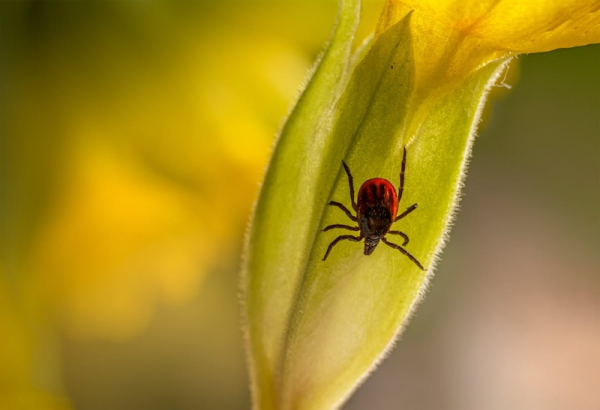
Tick. Photo: Erik Karits
- Next Article Finland to build €700m wind farms in record energy project
Ticks have reappeared in southern Finland, marking the start of the annual tick season. The first sightings were recorded in February, and hundreds more have since been logged through the ‘Punkkilive’ map service.
The service, a collaboration between Turku University and Pfizer, gathers real-time data from the public.
The majority of recent sightings have come from southwestern areas, where daytime temperatures have stayed above five degrees Celsius.
According to Ilari Sääksjärvi, a biodiversity professor at the University of Turku, this is the temperature threshold at which ticks become active.
“We can now say the season has started, especially in southern and southwestern Finland,” Sääksjärvi said.
Subzero night-time temperatures do not stop the ticks. Instead, they retreat into forest litter and become active again as soon as it warms up.
Tick activity in Finland has steadily increased over the past 30 years. The species has also expanded its range further north in response to rising average temperatures.
“Climate change is a key factor. It has allowed ticks to establish themselves in areas where they were previously rare,” Sääksjärvi explained.
The Finnish Institute for Health and Welfare (THL) warns that the two main tick-borne diseases in Finland are Lyme disease and tick-borne encephalitis (TBE). The number of confirmed TBE cases has doubled in the past decade.
In 2023, THL reported more than 8000 cases of Lyme disease and over 140 cases of TBE. The majority of infections occur between May and September, but early spring temperatures have extended the active season.
Tick prevention guidelines from THL include wearing long sleeves and trousers in wooded or grassy areas, using insect repellent, and checking the skin after spending time outdoors.
Tick surveillance continues nationwide, but southern coastal areas report the highest activity each year. The Punkkilive service has become an increasingly popular tool for both researchers and the public. It allows users to report sightings and follow the spread of ticks across Finland.
Sääksjärvi encourages citizens to participate.
“Public data collection helps track changes and identify new high-risk areas. Everyone who reports a sighting adds to our understanding of the tick population and its movement,” he said.
Tick-borne encephalitis is preventable by vaccination, which is recommended for residents and frequent visitors to known risk areas. THL provides a list of these locations on its website, updated annually based on case data.
The spring tick season typically lasts into late autumn, depending on temperature trends. According to meteorological forecasts, warm weather is expected to continue in April, suggesting a longer and more active season ahead.
HT
- Next Article Finland to build €700m wind farms in record energy project
Source: www.helsinkitimes.fi
